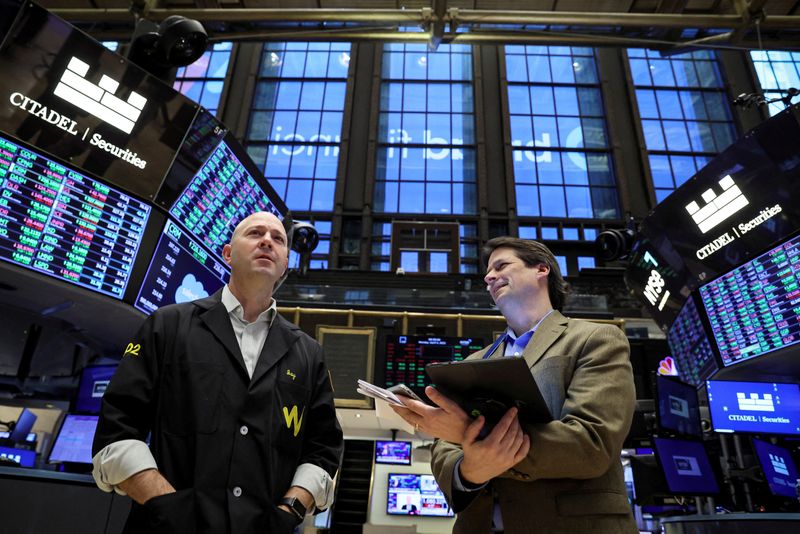By Yasin Ebrahim
Investing.com -- The S&P 500 pared losses Friday, but struggled for direction amid an Nvidia-led slide in chips and rout in Lyft following weaker guidance and a surprise quarterly loss.
The S&P 500 fell 0.03%, the Dow Jones Industrial Average gained 0.3%, or 92 points, the Nasdaq was down 0.9%.
Alphabet (NASDAQ:GOOGL) steadied following days of losses, but big tech mostly traded in the red as losses were exacerbated by a slump in Nvidia.
NVIDIA (NASDAQ:NVDA) fell more than 3% as some question how much upside lies ahead for the stock, which is up about 44% year to date on bets that the surge in interest in AI applications – following strong demand for OpenAI’s ChatGPT tool – will boost chip demand.
“Nvidia is trading rich from a valuation perspective,” said Greg Bassuk, chief executive officer at AXS Investments in New York, pointing to the risk of “multiple compression” ahead.
The earnings front showing mostly weaker than expected results also soured sentiment on stocks.
LYFT Inc (NASDAQ:LYFT) tumbled more than 32% after the ride-sharing company reported revenue guidance that fell short of estimates and a surprise quarterly loss as lower prices and rising costs hurt margins.
“A different mix of rides, improving driver supply will cause less primetime pricing, and reduced base pricing due to heightened competition are all negatively impacting FY23 outlook,” Wedbush said as it downgraded the stock to Neutral from Outperform.
Expedia (NASDAQ:EXPE), meanwhile, reported quarterly results that missed on both the top and bottom lines, sending its shares more than 2% lower. But some analysts attributed the weakness to weather-related cancellations of bookings that weighed on shares.
“[W]e are inclined to look through reported 4Q numbers, as Hurricane Ian in October and a rash of weather-related cancellations late in December served as the primary factors behind the miss,” Deustche Bank said in a note.
Energy stocks kept losses in the broader market in check, supported by rising oil prices after Russia said it would cut production by 500,000 barrels per day next month, at a time when many are expecting energy demand to be bolstered by the China reopening.
“The 1.1 mb/d rise in China demand this year (Q4/Q4) should push oil markets back into deficit in June, expose structural underinvestment, boost prices, and lead OPEC to reverse its November 2022 production cut in 2023H2 (the second half of 2023),” Goldman Sachs said in a note after cutting its 2023 price target on Brent crude by $5 to $75 per barrel.
